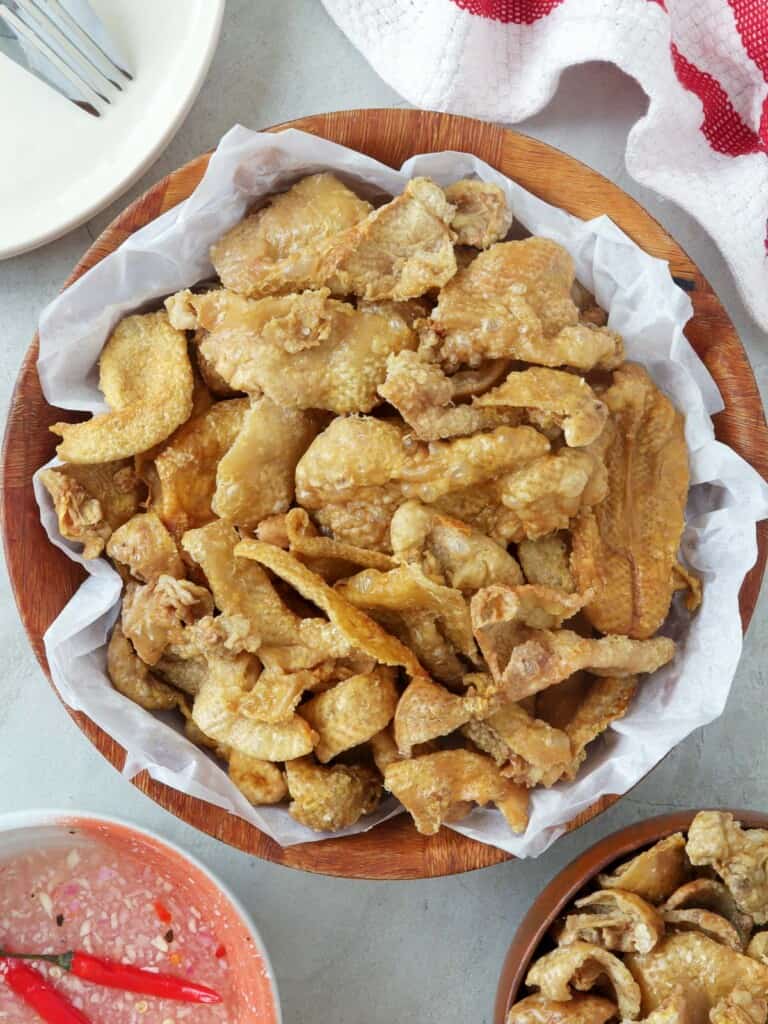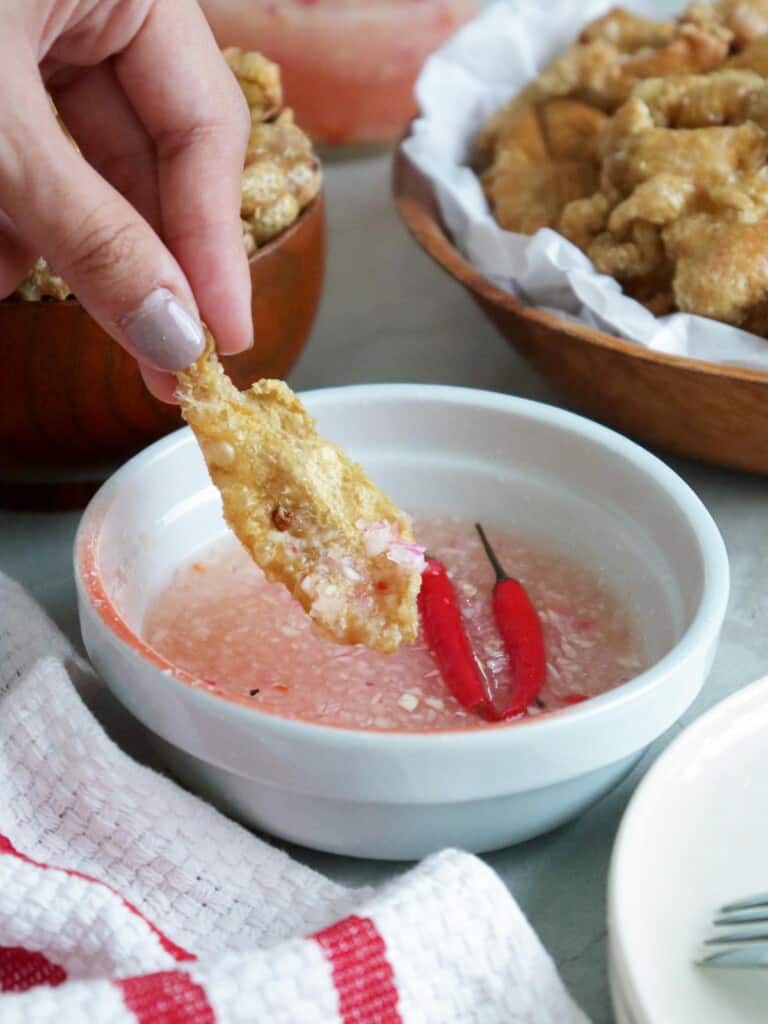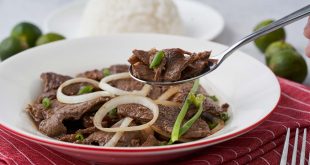Level up your finger food game with super crispy chicken skin chicharron! These chicken rinds are crunchy, tasty, and delicious as appetizers or snacks. Plus, they’re high in fat and have zero net carbs, making them keto-friendly.

Do you remove the skins of your chicken before cooking to cut down on fat? Save them in the freezer because I have a recipe for you -chicken skin chicharron!
I know, I know. It defeats all that trouble of trimming the skin only to consume all that heart-clogging grease in one sitting. But as my favorite humorist, Erma Bombeck, said: Seize the moment. Remember all those women on the ‘Titanic’ who waved off the dessert cart.
Chicharon or tsitsaron are one of the many examples of Spanish influence in our local culture. Ubiquitous in Philippine cuisine, they’re commonly served as a snack or appetizer or used in other dishes like munggo soup and pancit palabok.
They come in many varieties, including pork rind, pork belly, intestines (isaw), pork ears, omentum (bulaklak), tuna skin, chicken skin, and mushroom. The cooking procedure, however, is mostly the same. The meat is cooked until tender, dried to remove moisture, and deep-fried to crunchy perfection.
Cooking steps
- Boil– the skins to tenderize, render fat, and impart desired flavors. I like to use a simple solution of vinegar, peppercorns, garlic, and salt.
- Dehydrate– In olden times, the meat is laid out under the sun to draw out the excess moisture. It’s a proven technique but not exactly doable (unhygienic for one thing) in my current part of the world. Instead, I dry the skins “low and slow” in the oven. Another alternative method is to arrange the skins in a single layer on a baking sheet and refrigerate them uncovered overnight to dry out.
- Deep-fry– maintain the temperature at the optimal 350 F to 375 F. Do not overcrowd the pan and cook in batches as needed to prevent the temperature from plummeting.
- Drain– remove the fried skins with a slotted spoon and drain them on a wire rack set over a pan to catch oil drips. The chicharron will crisp up more as they cool.
Quick Tip
Not all oils are created equal and some have higher smoke points than others. I don’t normally use lard in my cooking as it’s not very “healthy”, but we’re frying chicharron so what’s the point? Next to tallow, it’s the best oil for deep-frying with a 375 F smoke point. If you prefer not to use lard, substitute with other high smoke point oils such as canola, safflower, or grapeseed oil.

Serving suggestions
Serve tsitsarong manok with spicy vinegar or Lechon sauce for the best experience!
How to store
- For food safety, it’s best to store the homemade chicharon in the refrigerator. Transfer to an airtight container or resealable bag to keep from going stale and refrigerate for up to 5 days.
- To store unfried, arrange the dehydrated skins in a single layer on a baking sheet. Cover with film and freeze until firm. Transfer to a freezer-safe container or bag and freeze for up to 3 months. Thaw and deep-fry when ready to enjoy.
 ZiddiDil.Com ZiddiDil.Com – Watch Hindi Desi TV Serials Episode Online
ZiddiDil.Com ZiddiDil.Com – Watch Hindi Desi TV Serials Episode Online


